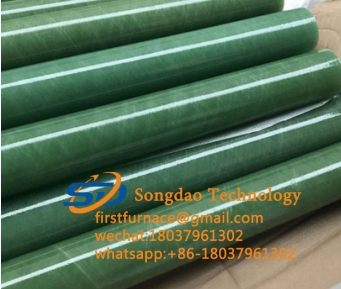- 19
- Feb
Flux de processus d’un tuyau d’enroulement en plastique renforcé de fibres de verre époxy
Flux de processus d’un tuyau d’enroulement en plastique renforcé de fibres de verre époxy
La bonne qualité du produit se reflète dans son apparence exquise. Grâce à l’analyse et à la recherche de produits similaires, il a été constaté que la propriété de la couche intermédiaire du tuyau d’enroulement en plastique renforcé de fibres de verre époxy est étroitement liée à la transparence du tuyau. La transparence spécifique du tuyau d’enroulement en plastique renforcé de fibre de verre époxy se réfère à l’épaisseur de paroi du tuyau. Transparent dans une petite plage, en ce qui concerne le tuyau d’enroulement en plastique renforcé de fibre de verre époxy ordinaire. Pourquoi le tube est-il transparent ? La raison principale est qu’il y a relativement peu de bulles à l’intérieur du tube, et la colle de résine époxy peut infiltrer plus complètement les fibres de verre, éliminant les bulles et renforçant la colle de résine a un grand effet sur le degré d’infiltration des fibres de verre et de l’intercalaire performances du tube. Grande aide. A cet égard, afin d’améliorer les performances de l’intercalaire, le plus important est de renforcer le degré d’infiltration de la résine colle à la fibre de verre et de minimiser les bulles d’air dans le tube.
Generally speaking, the pouring body of epoxy resin glue is often in a transparent state, but when it is stirred and heated to cure, bubbles appear, so the obtained bubbles are also opaque materials. There are a lot of air bubbles in the resin glue. The monofilament of glass fiber is also in a transparent state. According to the relevant data, if the absolute refractive index of the two materials is similar, combining the two similar materials will produce relatively high transparency. In the process of FRP forming, the diameter of some bubbles is often much larger than the diameter of glass fiber. Large bubbles can be avoided by forming technology. However, if epoxy resin glue with high viscosity is used to infiltrate glass fiber At times, it is unavoidable to have small air bubbles in FRP. Although the number of small air bubbles can be reduced by using special means, it cannot be completely eliminated. In FRP pipes, the gaps and bubbles around the glass fibers are often connected to each other, and a continuous channel can be formed on the phase interface. In this way, it is very easy for moisture to flow to the depths along the phase interface, thereby causing damage to the glass steel pipe. Therefore, epoxy resin glue should be used to infiltrate the glass fiber, which not only strengthens its anti-penetration ability, but also makes its bonding more tightly.

